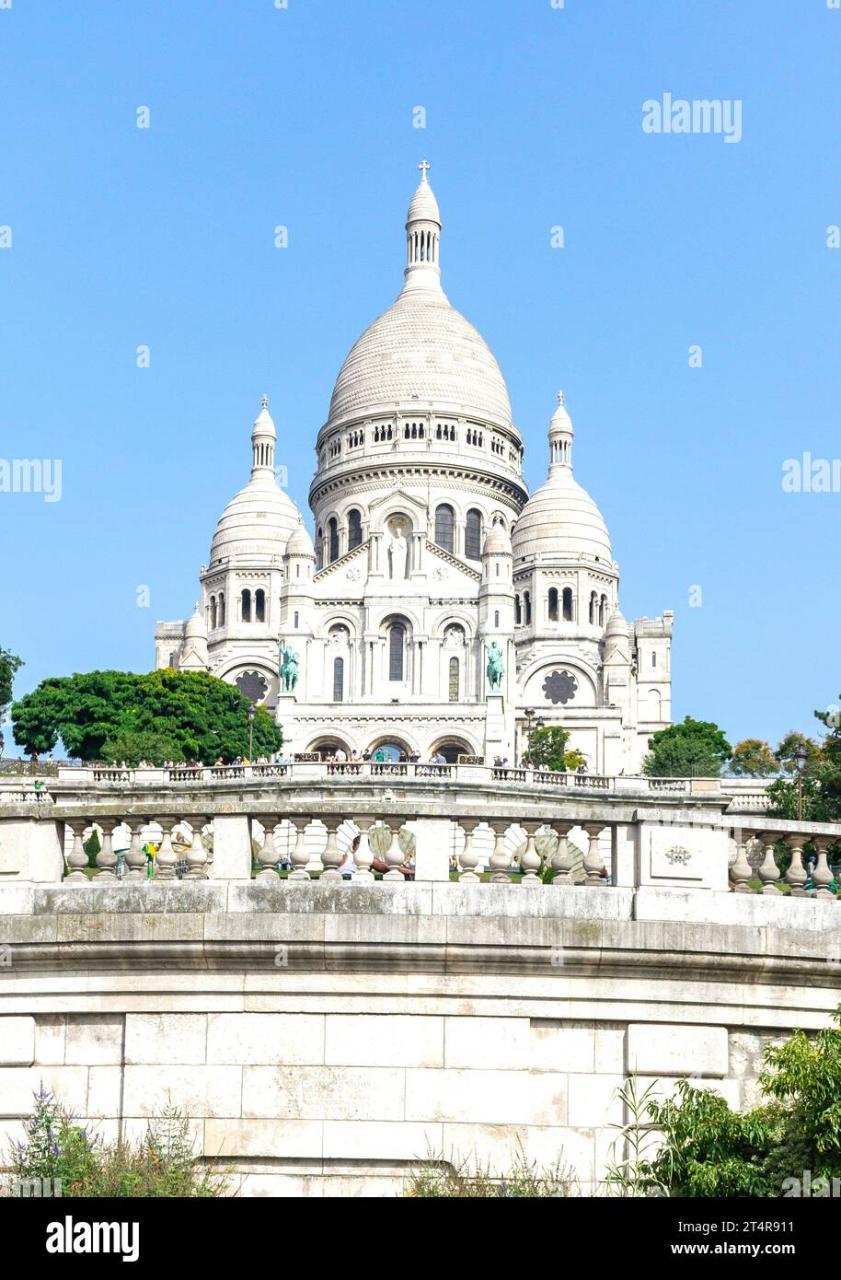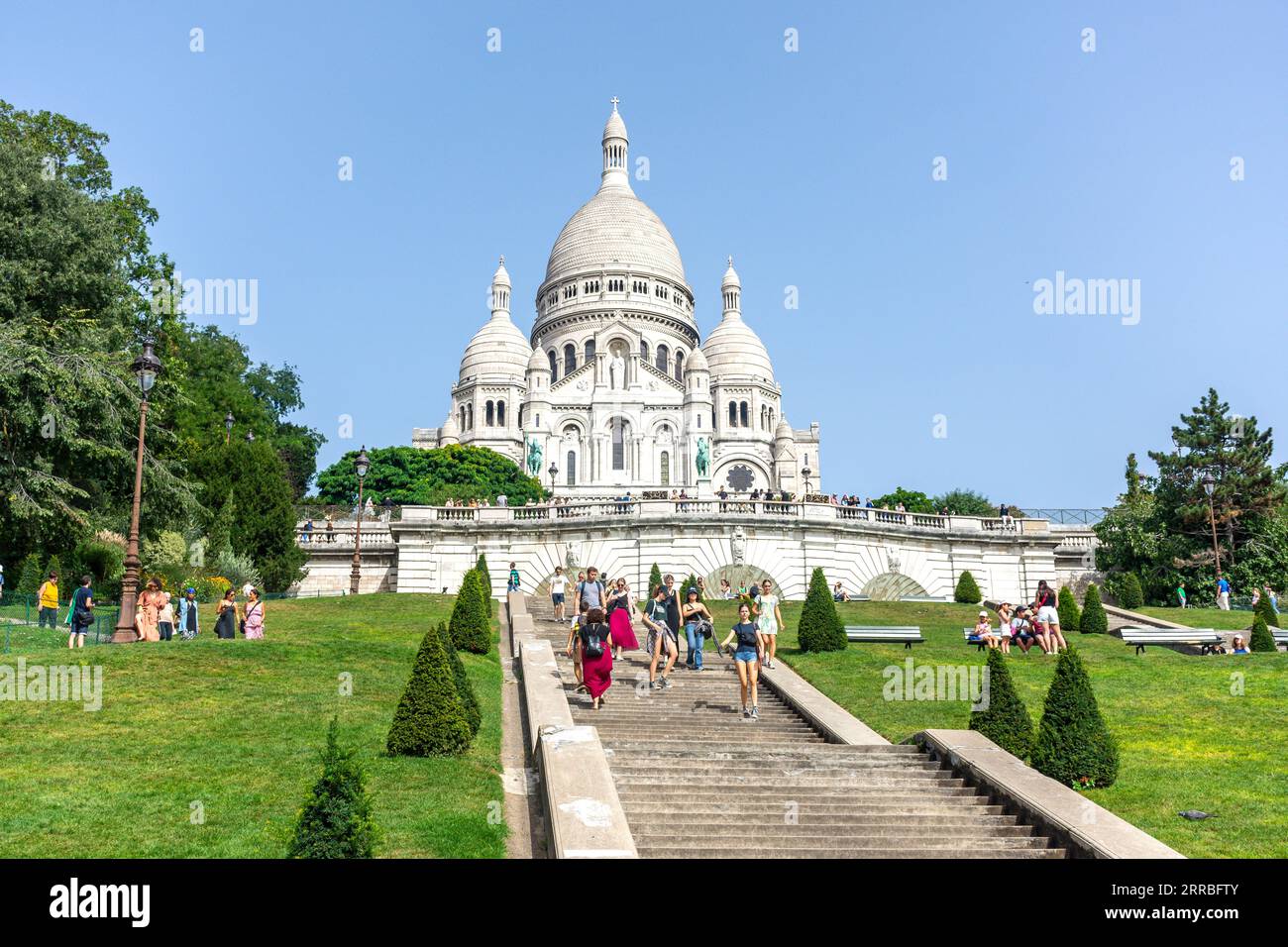The Basilique du Sacré-Cœur de Montmartre, often simply called the Sacré-Cœur Basilica, stands as a beacon of faith and art atop the highest point in Paris, the Butte Montmartre. With its distinctive white dome and panoramic views of the city, the Basilica attracts millions of visitors each year. This article provides a comprehensive guide to understanding the history, architecture, and significance of the Sacré-Cœur, as well as detailed information on obtaining tickets and planning your visit.
A Brief History: From Vow to Landmark
The story of the Sacré-Cœur Basilica is deeply intertwined with the tumultuous history of France. Following the Franco-Prussian War (1870-1871), a national vow was made to build a church dedicated to the Sacred Heart of Jesus. This vow was intended as an act of penitence for the perceived moral failings of the French nation and a plea for divine intervention to restore peace and prosperity.
The National Assembly officially approved the project in 1873, and the cornerstone was laid in 1875. Construction continued for over four decades, facing numerous challenges, including political upheavals and financial constraints. The Basilica was finally consecrated in 1919, shortly after the end of World War I.
Architectural Marvel: Romanesque-Byzantine Fusion
The Sacré-Cœur Basilica is a striking example of Romanesque-Byzantine architecture, a departure from the Gothic style that dominated many other Parisian churches. The design, by architect Paul Abadie, was inspired by earlier Romanesque and Byzantine structures, such as the Saint Front Cathedral in Périgueux and the Hagia Sophia in Istanbul.
Key architectural features include:
- The White Stone: The Basilica is constructed from Château-Landon stone, a unique travertine that hardens and whitens with age and exposure to the elements. This gives the Sacré-Cœur its characteristic brilliant white appearance.
- The Domes: The Basilica is crowned by a large central dome, which reaches a height of 83 meters (272 feet), and four smaller domes. The central dome offers unparalleled panoramic views of Paris.
- The Mosaics: The interior of the Basilica is adorned with stunning mosaics, including the vast mosaic above the altar, depicting Christ with his Sacred Heart, one of the largest mosaics in the world.
- The Grand Organ: The Basilica houses a magnificent grand organ built by Aristide Cavaillé-Coll, a renowned French organ builder. The organ is still used for concerts and services today.
- The Crypt: Beneath the Basilica lies a vast crypt, larger than the Basilica itself. The crypt houses statues of saints and depictions of significant events in Christian history.
The Significance: Faith, Art, and National Identity
The Sacré-Cœur Basilica holds deep significance for both religious and cultural reasons:
- Religious Significance: The Basilica is dedicated to the Sacred Heart of Jesus, a symbol of divine love and compassion. It serves as a place of pilgrimage and prayer for Catholics from around the world.
- Artistic Significance: The Basilica is a masterpiece of architecture and art, showcasing a unique blend of Romanesque and Byzantine styles. Its mosaics, sculptures, and stained glass windows are testaments to the artistic talent of the era.
- National Identity: The Basilica has become a symbol of French national identity, representing the country’s resilience and commitment to faith in the face of adversity. Its prominent location on Montmartre makes it a visible landmark for all Parisians and visitors.
Planning Your Visit: Tickets and Accessibility
The Basilica is free to enter for prayer and general visitation. However, there are specific areas that require a ticket for access:
- The Dome: Climbing to the dome is the most popular activity in Sacré-Cœur. From the top of the dome, you will have 360 degree views of the city of Paris, and on a clear day, you can see for many miles in every direction. There is an admission fee to climb to the top of the dome.
- The Crypt: As stated above, the crypt is an expansive part of Sacré-Cœur, and is bigger than the Basilica itself. It houses numerous statues of saints and depictions of Biblical scenes. There is an admission fee to visit the crypt.
Types of Tickets and How to Obtain Them:
- On-site Purchase: Tickets for the Dome and Crypt can be purchased directly at the entrance of each attraction, located inside the Basilica. This is often the easiest and most straightforward option.
- Online Purchase: While not directly through the Basilica’s official website, you can often find combined tickets or skip-the-line options through third-party travel agencies or tour operators. This can save you time, especially during peak season. However, be sure to research these options thoroughly to ensure their legitimacy and value.
Accessibility:
- Wheelchair Accessibility: The Basilica itself is accessible to wheelchairs via a ramp at the side entrance. However, the Dome and the Crypt are not accessible to wheelchairs due to the presence of stairs.
- Public Transportation: The Basilica is easily accessible by public transportation. The nearest Metro stations are Abbesses (Line 12) and Anvers (Line 2). From either station, you can either walk uphill to the Basilica or take the funicular.
Tips for Visiting the Sacré-Cœur:
- Dress Code: As a religious site, the Sacré-Cœur enforces a dress code. Visitors are expected to dress respectfully, covering shoulders and knees.
- Photography: Photography is generally permitted inside the Basilica, but flash photography and the use of tripods are prohibited.
- Security: Be prepared for security checks upon entering the Basilica. Large bags and luggage may not be allowed inside.
- Crowds: The Sacré-Cœur is a popular tourist destination, so expect crowds, especially during peak season. Visiting early in the morning or later in the afternoon can help you avoid the busiest times.
- Combined Visit: Combine your visit to the Sacré-Cœur with exploration of the Montmartre neighborhood. Explore the charming streets, visit the Place du Tertre (known for its artists), and enjoy the vibrant atmosphere of this historic district.
- Respectful Behavior: Remember that the Sacré-Cœur is a place of worship. Maintain a respectful demeanor and avoid loud conversations or disruptive behavior.
Beyond the Basilica: Exploring Montmartre
While the Sacré-Cœur is undoubtedly the main attraction, a visit to Montmartre offers much more:
- Place du Tertre: This historic square is known for its artists who create and sell their work. It’s a great place to find unique souvenirs and soak up the artistic atmosphere.
- Musée de Montmartre: This museum explores the history of Montmartre and its artistic heritage.
- Le Consulat: One of the oldest restaurants in Montmartre, offering traditional French cuisine in a charming setting.
- The Vineyard: Montmartre is home to a small vineyard, Clos Montmartre, which produces a limited quantity of wine each year.
- The Love Wall (Le Mur des Je t’aime): A wall covered in "I love you" written in hundreds of different languages.
Conclusion:
The Basilique du Sacré-Cœur de Montmartre is more than just a beautiful building; it is a symbol of faith, art, and national identity. Whether you are drawn to its architectural grandeur, its religious significance, or its breathtaking views of Paris, a visit to the Sacré-Cœur is an unforgettable experience. By understanding the history, architecture, and practical details of visiting this iconic landmark, you can make the most of your trip and create lasting memories. By planning your visit, purchasing your tickets in advance (if desired), and respecting the sacred nature of the Basilica, you can fully appreciate the beauty and significance of this Parisian treasure. Don’t forget to explore the charming streets of Montmartre and discover the artistic spirit that has defined this neighborhood for centuries.


